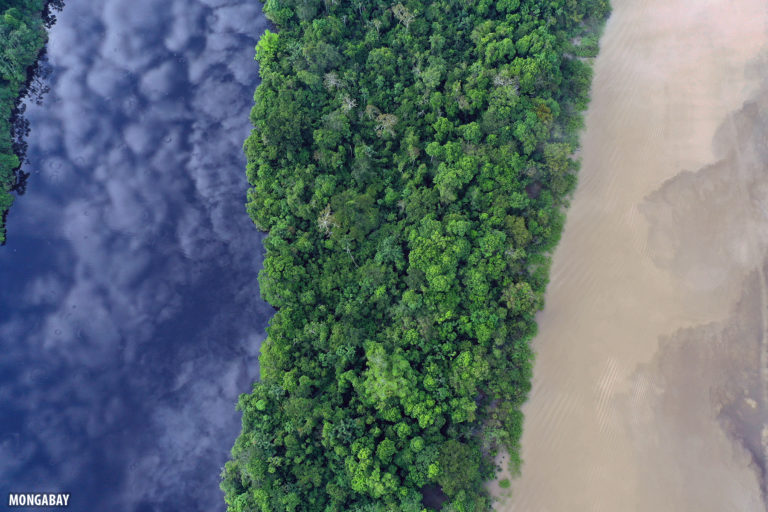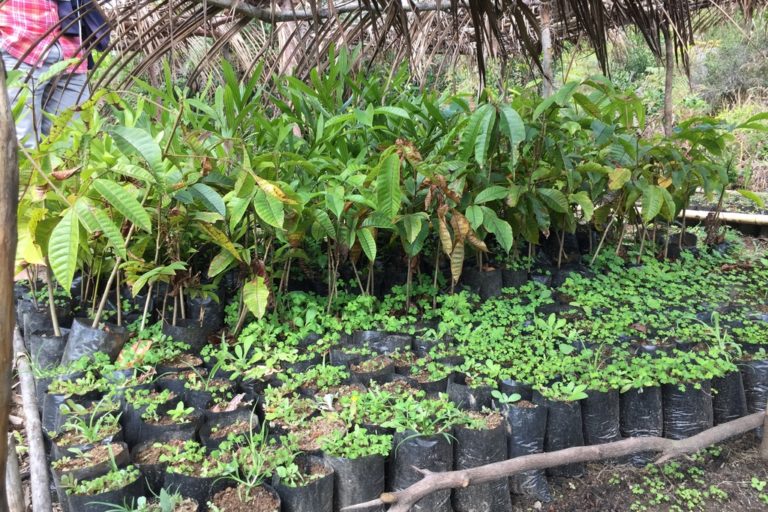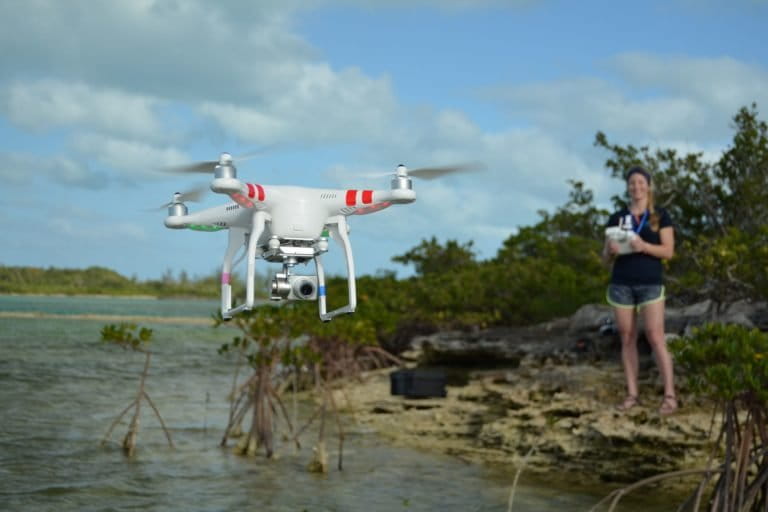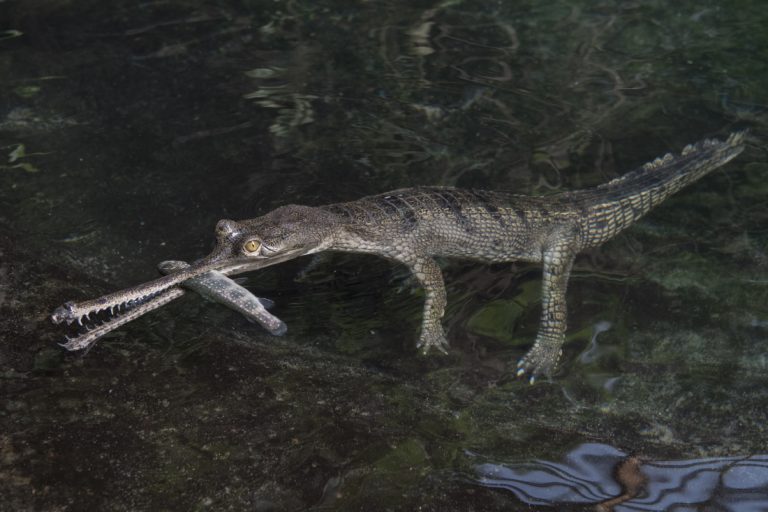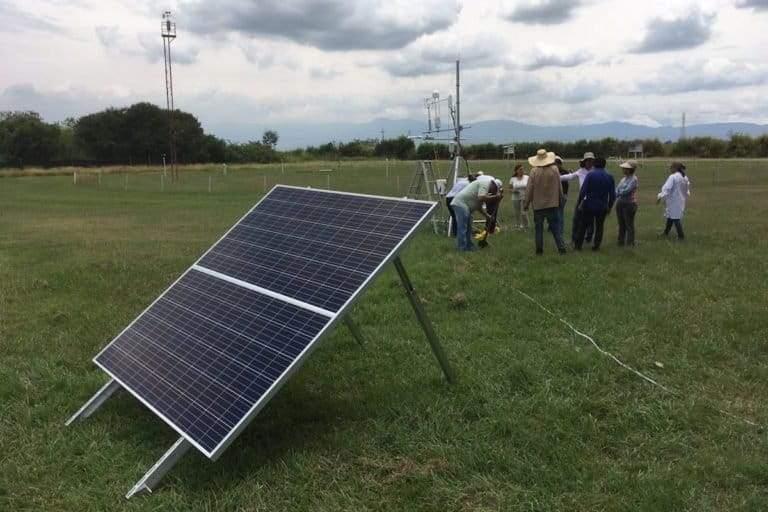In March 2020, just prior to COVID-19 being a pandemic, I spent a few days in the tri-border region of Brazil, Colombia, and Peru. There I used a drone to…
While I've written about use of drones in conservation since 2012 — a Mongabay story was the first to use the term "conservation drones" — 2019 was the first year…
ROCHESTER, New York and RANOMAFANA NATIONAL PARK, Madagascar — Tom Snyder wants to change the way people see trees. Specifically, he wants to help donors to Seneca Park Zoo in…
RANOMAFANA and ANTANANARIVO, Madagascar — While many U.S. travelers dream of the fabled forests of Madagascar, for Malagasy conservationist Mahandry Hugues Andrianarisoa, 28, it was the verdant landscape of upstate…
A New Zealand-based research team assessing the utility of small, multi-rotor unmanned aerial vehicles (UAVs) to survey and study humpback whales determined that video data collected from a UAV improved…
The Con X Tech Prize just announced its second round will be funding 20 finalists each with $3,500 to create their first prototypes. Some 150 teams submitted ideas that use…
Sometimes looking for rare plants can mean taking extreme steps. And for decades, botanists at the National Tropical Botanical Garden (NTBG), a nonprofit based on the island of Kauaʻi in…
In January this year, a drone surveying a cliff face in a remote part of Kalalau Valley on the Hawaiin island of Kaua‘i chanced upon something unexpected: In one of…
In 1995, there were only 51 kākāpō left on Earth, and it seemed that the giant flightless parrots were headed for extinction. Once abundant in New Zealand, the ground-dwelling kākāpō…
A prototype system to identify rare species in real time using thermal-imaging cameras mounted on unmanned aircraft, or drones, passed its latest test when it successfully identified orangutans (Pongo pygmaeus)…
There’s a new record for the tallest tree in the tropics, and the scientists who found it say it could add to our understanding of how and why some trees…
This story was produced in partnership with the Pulitzer Center. DARIÉN GAP, Panama — There is a land at the center of the Americas that is said to remain in…
Koalas are Australian icons, known globally for their fuzzy ears, broad wet nose, and love of eucalyptus leaves. They are also cryptic, slow-moving creatures that live high in the leafy…
Human-dominated mangroves are far from what is considered an ideal environment for otters. And yet an estuarine island on India’s western coast is home to a thriving population of the…
Noisy aliens flying above us might stress us out or cause alarm. As drones fly UFO-like over forests, wetlands, deserts, and oceans, serving as tools to monitor wildlife, detect habitat…
Forestry and construction companies in the U.K. are required to ensure their work doesn’t endanger protected species, including the nesting sites of protected bird species. In the case of the…
You can now speak into your mobile phone and have it produce written text. Then have Google translate your words into Japanese, or Hindi. In two seconds. These examples of…
After months of fasting as she traveled hundreds of kilometers across the ocean, a female loggerhead sea turtle hauls herself up onto the sand: the shoreline she has returned to…
Using drones for wildlife surveys isn’t new to marine wildlife research, but it’s been focused mainly on detecting the large mammals and sea turtles that break the ocean’s surface to…
Flor Rumayna and Sara Hurtado arrived in Lima this past August from their homes in the Amazon headwaters to learn more about aerial monitoring of forests. They’d been researching new technologies…
Technology users and tech developers don’t always talk directly to each other, but they should. The relatively small size of the scientific/conservation community and its need for a particular suite…
Forest monitoring has experienced a revolution in recent years, with vast improvements in satellite sensors, the emergence of drones, and growing ubiquity of on-the-ground technologies like smartphones and camera traps.…
The non-profit Conservation X Labs (CXL) recently announced twenty finalists for the Con X Tech Prize – subtitled “Hacking Extinction.” The finalists will receive $3,500 to continue developing their projects,…
The survey looked easy on paper. All they had to do was to go the Babai Valley in western Nepal and fly a drone (or unmanned aerial vehicle, UAV) along…
MEDELLIN, Colombia — Keeping an eye on what is going on out in the vast countryside of Colombia’s palm oil plantations is a challenge. But that may be about to…
The most popular stories last week from our Spanish-language service, Mongabay-Latam, followed farmed salmon escapes in Chile, a new biosphere reserve in Ecuador, and high-tech forest monitoring in Peru. Patagonia’s…
The Brazilian government used a drone to help confirm the presence of an uncontacted indigenous group deep in the Amazon rainforest. FUNAI, Brazil's indigenous affairs agency, undertook an expedition to…
The Great Elephant Census, conducted in 2014 and 2015, counted more than 350,000* elephants across 18 African countries. Human observers in small planes flew some 294,000 kilometers during more than 1,500…
On this episode of the podcast we discuss the increasing use of drones by wildlife lovers, researchers, and businesses, how that might be stressing animals out, and how drone hobbyists…
Last month, Seattle Audubon hosted a panel discussion featuring Mongabay staff and colleagues about the ever-growing applications of technology for conservation. Mongabay Founder and CEO Rhett A. Butler moderated the…
